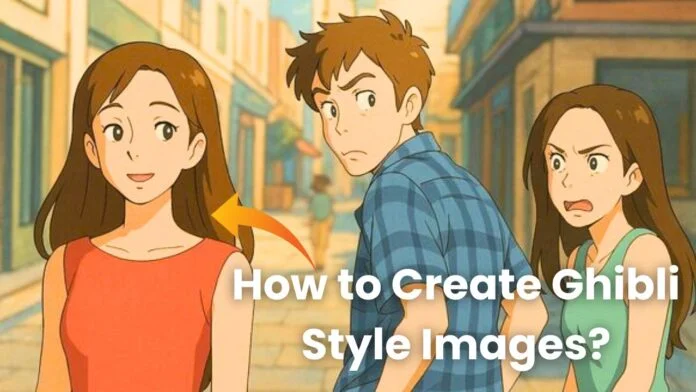Ghibli art has taken the internet by storm! This unique animation style, inspired by Studio Ghibli’s breathtaking movies, has captured the hearts of anime fans worldwide. If you’ve ever wondered how to create Ghibli-style images, you’re in the right place. In this post, we’ll explore what Ghibli art is, its origins, and how you can create your own Ghibli-style artwork using AI tools or traditional methods.
What is Ghibli Art?
Ghibli art refers to the iconic animation style used by Studio Ghibli, a Japanese animation studio founded in 1985 by legendary creators Hayao Miyazaki and Isao Takahata. The studio is known for producing visually stunning films like My Neighbor Totoro, Spirited Away, and Howl’s Moving Castle. Ghibli art is characterized by:
- Hand-drawn animation
- Soft color palettes
- Detailed backgrounds
- Expressive characters with deep emotions
- Dreamy, nostalgic, and magical settings
Create Ghibli Art Style Images:
Upload Your Photo
Preview your image
1. Using AI Tools to Generate Ghibli Art
With the rise of artificial intelligence, creating Ghibli-style images has become easier than ever. Tools like ChatGPT’s AI image generator and other platforms allow users to transform their regular photos into Ghibli-style illustrations. Here’s how you can do it:
Step 1: Choose an AI Tool
Some popular AI tools for generating Ghibli-style images include:
- ChatGPT’s AI Image Generator (available in paid versions)
- Artbreeder
- Deep Dream Generator
- Stable Diffusion (with custom models for anime-style art)
Step 2: Upload or Describe Your Image
- If the AI tool allows you to upload an image, select a high-quality photo.
- Some AI models work based on text prompts. You can type something like: "A peaceful countryside scene in Studio Ghibli animation style, with warm lighting and lush green fields."
Step 3: Adjust the Style Settings
- Many AI tools provide options to adjust textures, color grading, and details.
- Select soft, watercolor-like textures and warm tones to match the Ghibli aesthetic.
Step 4: Generate & Refine
- Click the generate button and wait for the AI to process your request.
- Some tools allow further refinements, such as adding more details or adjusting brightness/contrast.
2. Drawing Ghibli Art Style Manually
If you want to create Ghibli-style images by hand, follow these steps:
Step 1: Study Ghibli’s Art Style
- Watch Studio Ghibli movies and take note of color schemes, backgrounds, and character designs.
- Pay attention to the lighting and atmosphere, which create the magical feel of Ghibli films.
Step 2: Sketch the Outline
- Start with a rough sketch using soft pencil strokes.
- Keep the characters expressive and detailed, with large eyes and smooth facial expressions.
Step 3: Add Colors & Shadows
- Use pastel and soft tones for coloring.
- Blend colors smoothly to create a watercolor-like effect.
- Pay special attention to natural lighting and shadows to add depth.
Step 4: Final Touches
- Add tiny details like falling leaves, dust particles in the sunlight, or subtle clouds in the background.
- Use digital tools like Photoshop or Procreate to refine the colors and textures if needed.
Why Some Artists Oppose AI-Generated Ghibli Art
While AI tools have made it easy to create Ghibli-style images, not everyone is happy with this trend. The original creator of Ghibli films, Hayao Miyazaki, has expressed his dislike for AI-generated art. He believes that art should be created by hand and that AI-generated images lack the soul and effort of human-made creations. This raises ethical concerns about replacing human artists with AI models.
The Environmental Impact of AI-Generated Art
Another factor to consider is the environmental impact. AI image generation requires a significant amount of computing power, which consumes energy. Some studies suggest that a single AI-generated image can use as much energy as charging a smartphone. This raises concerns about the sustainability of AI-generated art, especially when it is used for entertainment purposes rather than critical applications.











भाई ज्यादा से ज्यादा प्यार दिखाओ
Sahnwaj Bhai
YouTube per photo dalna hai